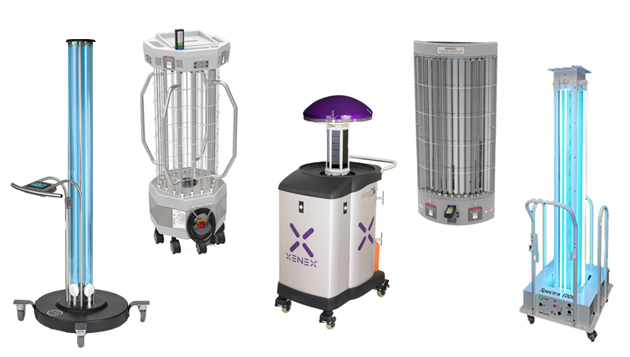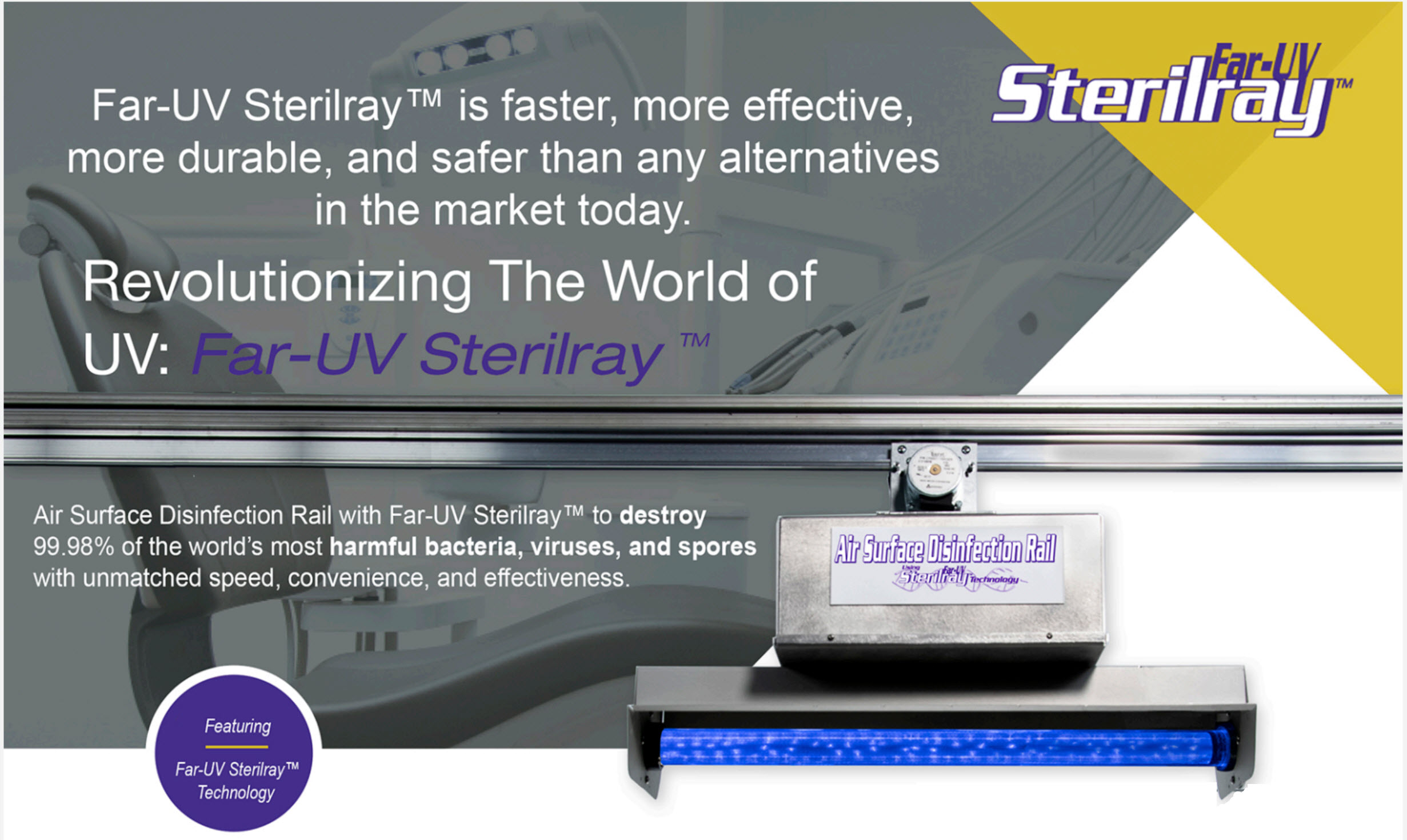UV Surface Disinfection Demystified: Comprehending the Scientific Research Behind the Solution
UV Surface Disinfection Demystified: Comprehending the Scientific Research Behind the Solution
Blog Article
Taking Advantage Of the Potential of UV Sanitation: Safeguarding Wellness and Health
As the world faces the continuous pandemic and the constant hazard of contagious diseases, the relevance of preserving health and health has never ever been more obvious. In this context, utilizing the possibility of UV disinfection becomes a promising option. UV disinfection, an innovation widely utilized in numerous industries, has actually proven efficient in removing damaging virus. Nevertheless, there is a lot more to check out behind the scientific research of UV disinfection and its applications. From understanding the systems at play to applying this innovation in our day-to-days live, this discussion intends to lose light on the capacity of UV sanitation and its duty in securing our wellness and hygiene.
Comprehending UV Sanitation
UV sanitation is a very efficient and extensively used technique for making sure and removing hazardous virus wellness and health. This strategy makes use of ultraviolet (UV) light to suspend microbes by damaging their DNA and stopping them from reproducing. UV sanitation is specifically reliable against germs, viruses, and other microorganisms that can create conditions and infections.
The concept behind UV disinfection is easy yet effective. UV sanitation can be applied in numerous settings, including water treatment plants, healthcare centers, food processing industries, and air filtration systems.
Among the advantages of UV disinfection is its capacity to successfully and efficiently remove a large range of virus without the requirement for ingredients or chemicals. Unlike other sanitation techniques, such as chlorine or ozone, UV sanitation does not introduce harmful byproducts or chemical residues right into the atmosphere. Additionally, UV disinfection is a non-contact procedure, which implies that it does not call for physical contact with the microorganisms, minimizing the threat of cross-contamination.

The Scientific Research Behind UV Disinfection
The performance of UV disinfection depends on its capacity to disrupt the genetic product of microorganisms, providing them not able to reproduce and thereby removing their harmful capacity. UV, or ultraviolet, radiation is a kind of electromagnetic radiation with wavelengths shorter than noticeable light. It is categorized into 3 types: UV-A, UV-B, and UV-C. UV-C radiation, particularly, has the fastest wavelength and the highest energy. Due to the fact that it can penetrate the cell walls of bacteria and harm their DNA or RNA., this high-energy UV-C radiation is most efficient in sanitation applications.
When bacteria are subjected to UV-C radiation, the energy is taken in by their genetic material, causing bonds to damage and creating chain reactions that interrupt their capability to replicate. This avoids the microorganisms from replicating and spreading out infection. UV disinfection is particularly effective versus germs, viruses, and fungi, consisting of typical pathogens such as Escherichia coli, Salmonella, and Flu.
The scientific research behind UV disinfection is sustained by considerable research study and studies. It has actually been shown that exposure to an enough dose of UV-C radiation can achieve a high degree of disinfection, frequently exceeding 99.9% efficiency in killing microorganisms. Nevertheless, it is essential to note that the performance of UV sanitation relies on different elements, including the intensity of UV-C radiation, direct exposure time, range from the UV source, and the susceptibility of the microbe to UV radiation.
Applications of UV Sanitation
Provided the extensive study and efficacy of UV sanitation in interrupting the genetic material of microorganisms, it is very important to explore the various practical applications of this modern technology. UV sanitation has proven to be a beneficial tool in a variety of industries where preserving a secure and clean setting is vital.
One major application of UV sanitation remains in healthcare setups. UV light can be made use of to sanitize surfaces, tools, and even the air in hospitals and clinical facilities. This aids to minimize the risk of healthcare-associated infections and makes sure a more secure atmosphere for people and health care employees.
Another essential application remains in the food and drink industry. UV disinfection is made use of to treat water and get rid Home Page of unsafe pathogens, such as E. coli and Salmonella, from the production procedure. uv surface disinfection. This makes certain the safety and quality of the items we take in
UV sanitation is likewise widely made use of in water treatment plants and wastewater treatment facilities. It is an effective technique for damaging dangerous bacteria, viruses, and bloodsuckers that can be existing in water sources. This helps to offer tidy and secure alcohol consumption water to neighborhoods and safeguard the environment from air pollution.
Additionally, UV disinfection is employed in the pharmaceutical market to sanitize tools and preserve the integrity of items. It is additionally made use of in research laboratories and research centers to stop contamination and guarantee exact results.
Advantages of UV Sanitation Innovation
One notable advantage of visit the site using UV sanitation technology is its capacity to efficiently remove microbes without the use of severe chemicals. This is specifically beneficial in numerous settings, such as health care centers, water treatment plants, and food handling industries, where the presence of hazardous pathogens positions a substantial threat to public wellness and safety and security.
Unlike conventional sanitation techniques that count on chemicals like chlorine or ozone, UV disinfection technology makes use of ultraviolet light to target and destroy the DNA of microbes, successfully neutralizing their ability to recreate and trigger infections. This process not just eliminates the demand for potentially harmful chemicals yet additionally lowers the threat of chemical deposit or by-products continuing to be in the cured setting.

In addition, UV disinfection modern technology is eco-friendly. As it does not count on the usage of chemicals, it gets rid of the need for their disposal, transportation, and production, lowering the overall carbon footprint related to disinfection procedures. Additionally, UV sanitation systems have a longer lifespan compared to chemical-based approaches, leading to much less frequent replacement click here for more and more reducing waste.
Implementing UV Sanitation in Daily Life
To efficiently apply UV disinfection in day-to-day live, individuals and companies can incorporate mobile UV sanitizing tools into their health regimens and cleaning practices. These gadgets are designed to emit ultraviolet light, which has actually been verified to eliminate or suspend a wide variety of microorganisms, including viruses, germs, and fungi. By making use of portable UV sanitizing tools, people can decontaminate frequently touched surface areas and objects, such as cell phones, doorknobs, keys, and laptop computers, lowering the risk of spreading out germs and infections.
In addition to integrating mobile UV sanitizing devices, it is important to adhere to appropriate standards and recommendations for efficient UV disinfection. This includes guaranteeing that the device is utilized properly and for the advised duration to accomplish ideal sanitation outcomes. It is likewise vital to focus on precaution, such as wearing protective eyewear and preventing direct exposure of the UV light to the skin.

In addition, organizations can apply UV disinfection modern technology in various settings to improve health practices. For circumstances, medical facilities and healthcare facilities can use UV disinfection robots to sterilize client spaces, running cinemas, and various other high-touch areas. Food processing industries can integrate UV sanitation systems into their assembly line to improve food security and stop contamination.
Conclusion
In verdict, UV disinfection innovation holds terrific potential in protecting wellness and health. With its numerous advantages, UV sanitation is a valuable tool for preserving a tidy and healthy and balanced environment.
Unlike other disinfection methods, such as chlorine or ozone, UV disinfection does not introduce dangerous byproducts or chemical residues right into the environment. It is crucial to keep in mind that the effectiveness of UV disinfection depends on various elements, including the strength of UV-C radiation, direct exposure time, range from the UV resource, and the sensitivity of the microorganism to UV radiation.
One more advantage of UV disinfection modern technology is its capability to supply continuous and quick sanitation. Unlike manual cleansing techniques, which can be time-consuming and call for substantial labor, UV disinfection systems can be automated and operate continuously, ensuring regular disinfection without human intervention.To effectively apply UV disinfection in day-to-day life, individuals and organizations can integrate mobile UV sanitizing gadgets right into their hygiene routines and cleansing methods.
Report this page